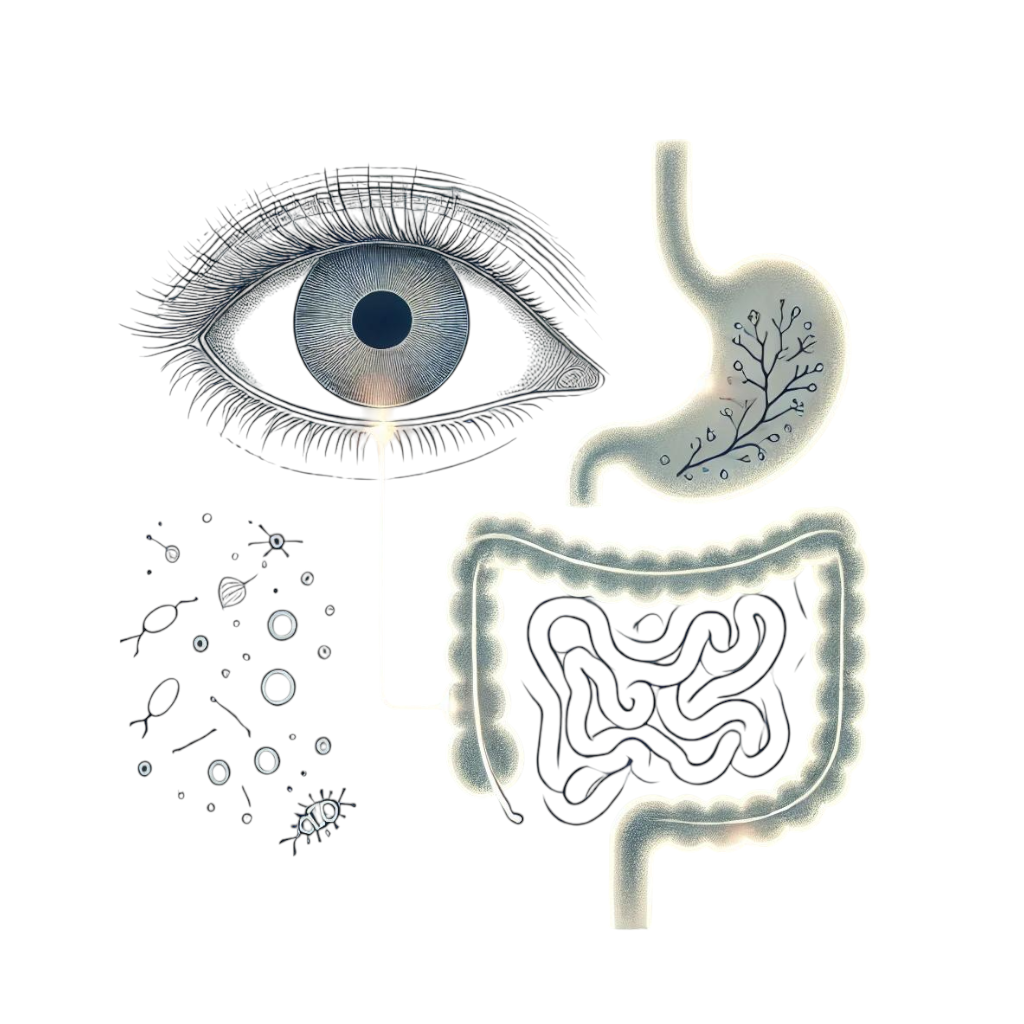The Economic Burden of Age-Related Macular Degeneration:
A Comprehensive Review
-What is the economic impact of age-related macular degeneration?
-How does AMD affect quality of life and daily living?
-What are the key strategies to reduce the burden of AMD?
Introduction
Age-related macular degeneration (AMD) is a leading cause of vision loss among older adults worldwide. As a progressive retinal disease, AMD significantly impacts patients' quality of life, poses a substantial economic burden on healthcare systems, and affects caregivers and society at large. This review consolidates findings from recent studies to provide a comprehensive understanding of the burden of AMD, including its epidemiological trends, economic implications, and societal impact.
Epidemiology and Prevalence of AMD
AMD affects an estimated 200 million individuals globally, with projections indicating an increase to 288 million by 2040. The disease primarily affects individuals over 60 years old and is classified into two main types: neovascular (wet) AMD (nAMD) and geographic atrophy (GA). Late-stage AMD, comprising both nAMD and GA, is responsible for most cases of severe vision impairment. Regional variations exist, with higher prevalence rates reported in Europe and North America compared to Asia and Africa.
Economic Burden of AMD
AMD imposes significant direct and indirect costs on patients, healthcare systems, and economies.
Direct Medical Costs
- Treatment expenses, including intravitreal anti-VEGF injections (ranibizumab, aflibercept, brolucizumab), remain a major cost driver.
- Healthcare utilization, such as ophthalmology visits, imaging (OCT, fluorescein angiography), and diagnostic procedures, contributes to escalating costs.
- The average annual cost per patient varies, with studies estimating:
- €17,265 (Year 1), €15,403 (Year 2), and €14,465 (Year 3+) in Spain for nAMD.
- $49.4 billion annually in the US, with productivity loss as the largest cost component.
Indirect Costs
- Loss of productivity due to visual impairment affects both patients and caregivers.
- Increased dependency on caregiving services, assistive technologies, and home modifications adds financial strain.
- Patients with AMD experience a higher risk of falls and associated healthcare costs.
Humanistic and Social Impact of AMD
AMD significantly reduces vision-related quality of life (VRQoL), leading to increased risks of:
- Depression and Anxiety: Patients with AMD are twice as likely to suffer from depressive disorders due to visual impairment.
- Loss of Independence: Challenges in daily activities such as reading, driving, and recognizing faces contribute to social isolation.
- Caregiver Burden: Informal caregivers, often family members, experience increased stress and financial hardship, impacting their work productivity and well-being.
Burden Across Different Healthcare Systems
The economic and social impact of AMD varies by healthcare system structure and access to treatment:
- United States: High treatment costs, but broad access to anti-VEGF therapies.
- Europe: Varied healthcare funding models influence patient access to AMD treatments.
- Low- and Middle-Income Countries: Limited access to early detection and treatment exacerbates AMD-related blindness.
Policy Implications and Future Directions
To reduce the burden of AMD, policymakers and healthcare providers should focus on:
1. Early Detection & Screening Programs: Regular eye exams and AI-assisted retinal imaging for early AMD identification.
2. Cost-Effective Treatment Strategies: Optimizing anti-VEGF injection schedules (e.g., treat-and-extend regimens) to balance efficacy and affordability.
3. Patient Education & Rehabilitation Services: Enhancing awareness, visual rehabilitation, and low-vision aid availability.
4. Support for Caregivers: Implementing financial and psychological support programs to reduce caregiver burden.
5. Global Collaboration in Research & Innovation: Developing novel therapeutic approaches, including gene therapy and regenerative medicine.
Conclusion
AMD is a major public health concern with profound clinical, economic, and societal implications. Addressing its burden requires a multidisciplinary approach encompassing early detection, cost-effective treatments, patient education, and policy-driven interventions. Future research should focus on improving therapeutic outcomes while minimizing financial strain on individuals and healthcare systems.
By understanding the full spectrum of AMD’s burden, stakeholders can implement effective strategies to improve patient outcomes and reduce the economic and social impact of this debilitating disease.
References:
https://jamanetwork.com/journals/jamaophthalmology/fullarticle/2825172
https://pubmed.ncbi.nlm.nih.gov/30634070/
https://publichealth.jmir.org/2023/1/e49852
https://link.springer.com/article/10.1007/s10792-021-01906-x
https://pubmed.ncbi.nlm.nih.gov/39193319/
https://www.clinicaltherapeutics.com/article/S0149-2918(21)00310-6/fulltext
https://bmchealthservres.biomedcentral.com/articles/10.1186/s12913-019-4666-0
https://www.jmcp.org/doi/10.18553/jmcp.2021.27.9.1260
https://pubmed.ncbi.nlm.nih.gov/35340626/
https://link.springer.com/article/10.1007/s40123-024-00960-9
https://pubmed.ncbi.nlm.nih.gov/30634070/
https://pmc.ncbi.nlm.nih.gov/articles/PMC1447589/
https://pubmed.ncbi.nlm.nih.gov/30634070/
https://pubmed.ncbi.nlm.nih.gov/34643793/
https://pubmed.ncbi.nlm.nih.gov/34916775/
https://jamanetwork.com/journals/jamaophthalmology/fullarticle/2825172
https://link.springer.com/article/10.1007/s40123-024-00960-9
https://pubmed.ncbi.nlm.nih.gov/39539801/
• What are the direct and indirect costs of AMD treatment?
• How much does AMD treatment cost globally?
• What are the long-term healthcare costs associated with AMD?
• How does AMD impact productivity and employment?
• What are the psychological effects of living with AMD?
• How does AMD affect caregivers and families?
• What is the role of anti-VEGF therapy in managing AMD costs?
• What are the main challenges in accessing AMD treatment worldwide?
• How can healthcare policies help reduce the burden of AMD?
• What new treatments are being developed for AMD?
• How do different countries compare in AMD treatment and healthcare costs?
• What role do AI and early screening play in managing AMD?
• What are the latest research insights on AMD burden?
• How can patients with AMD maintain independence and mobility?
• What are the societal costs of AMD-related vision loss?
• How does AMD impact mental health and emotional well-being?
• What are the best strategies for improving AMD patient care?


Leave a comment
This site is protected by hCaptcha and the hCaptcha Privacy Policy and Terms of Service apply.